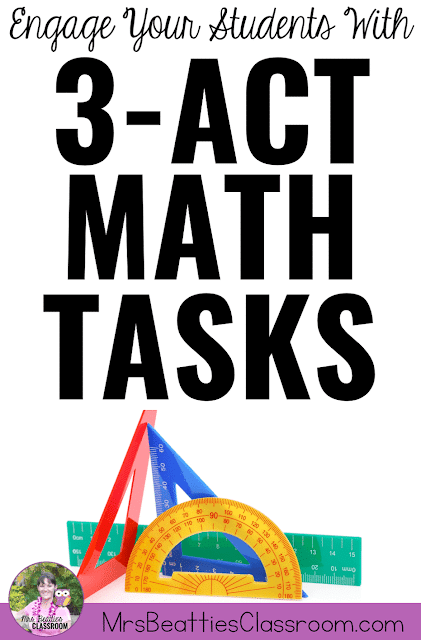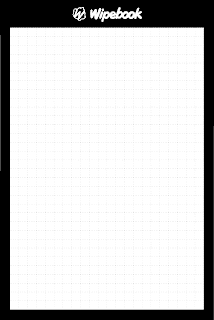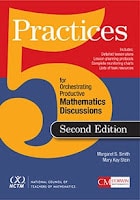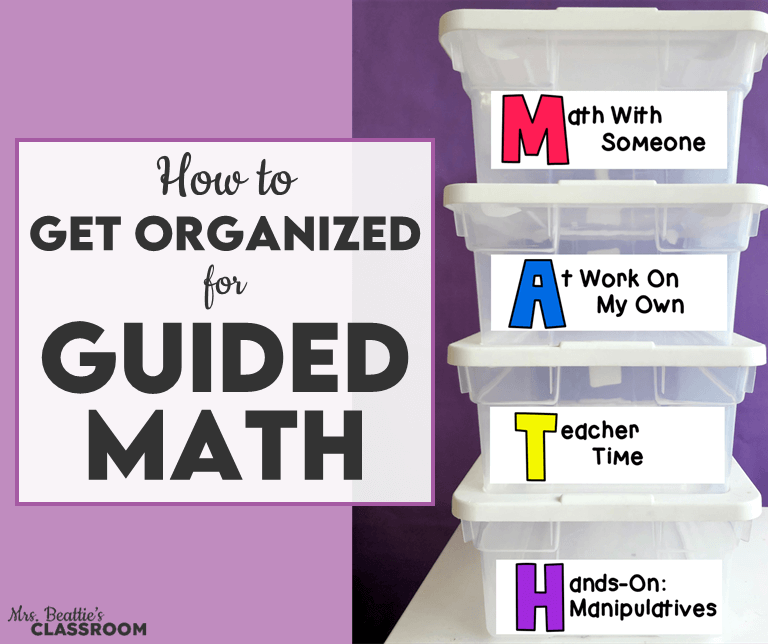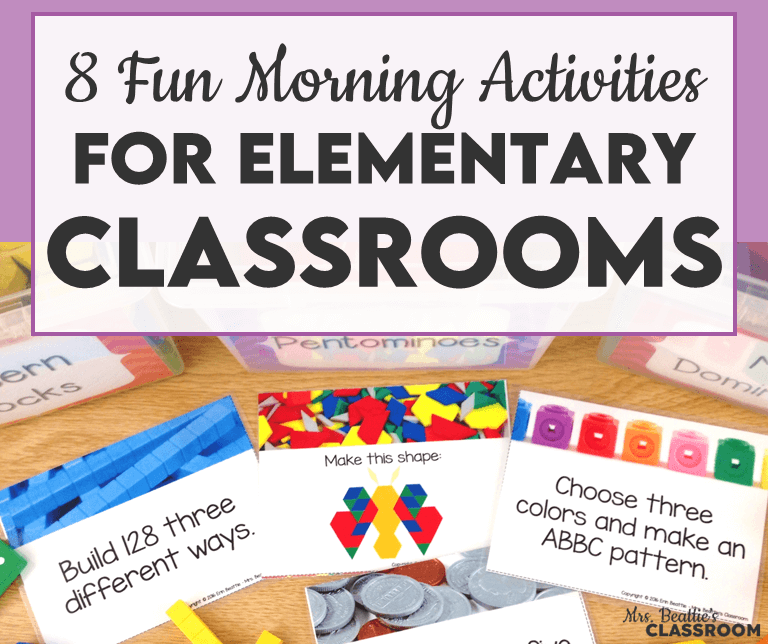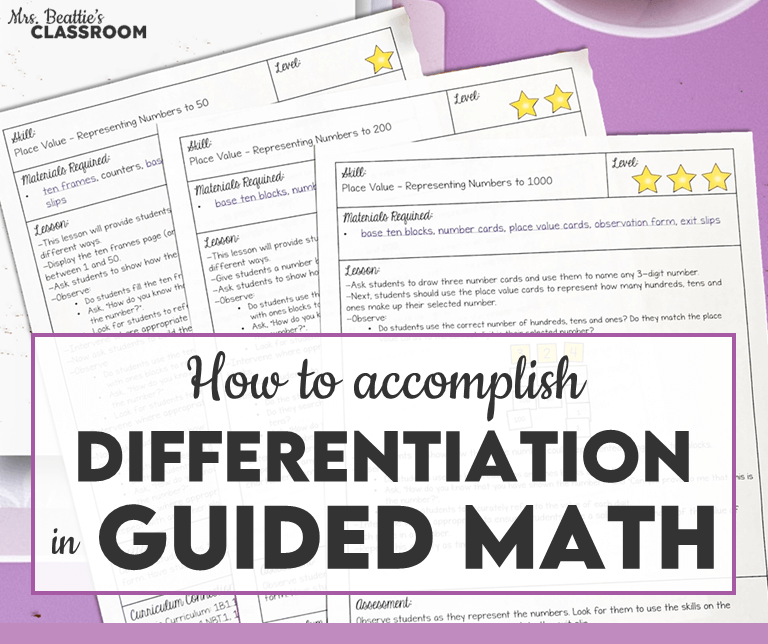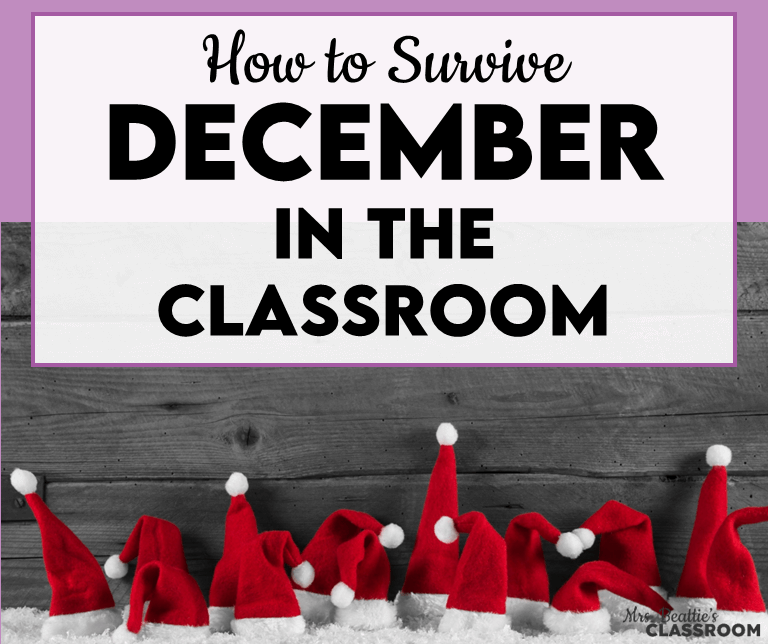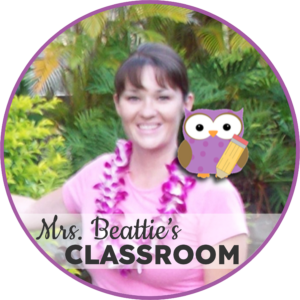This year, at a Math Lead in-service at our Education Centre, I was introduced to 3-Act Math Tasks. They’ve engaged my students so much that they are now a permanent part of my weekly math program, and my students tell me, “This is the best part of Thursday.” Read on to learn the basics of how to engage your students with 3-Act Math Tasks.
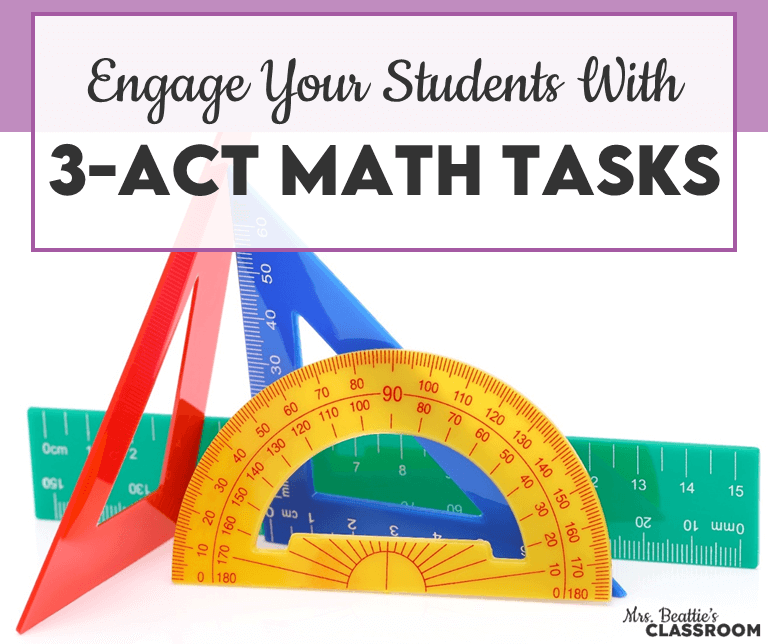
The Background
3-Act Math Tasks were introduced to the world in 2010 by high school teacher Dan Meyer. 3-Act Tasks are a whole-group mathematics activity with students collaborating in randomly created small groups on non-permanent vertical surfaces (more on this in a second).
Grouping Students
To begin my 3-Act Task, I organize my students into completely random groups of three. I do this by having each student pull a math manipulative out of a bucket organized for the number of students present that day. Everyone with the same piece becomes a group.
These “visibly random groups” are based on research by Peter Lijedahl. The research shows that in random groupings:
- Students become agreeable to work in any group they’re placed in.
- Social barriers are eliminated.
- There is increased mobility of knowledge between students.
- There is a reduced reliance on the teacher for answers.
- There is an increased reliance within and between groups for answers.
- Engagement on the task increases.
- Enthusiasm about the class increases.
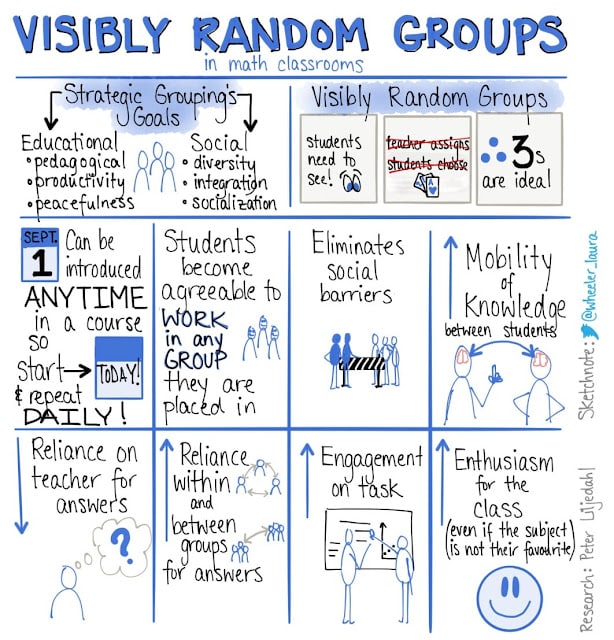
Organizing Groups for Work
Student groups get organized around the perimeter of the classroom at “non-permanent vertical surfaces.” Each group is given only one marker, and the expectation is that the student who is writing is not sharing their thoughts. To contribute, the marker must be passed to another group member.
Also, based on research by Peter Lijedahl, the non-permanent vertical surfaces are incredible tools in the classroom because the research shows:
- Students start writing faster.
- They take more risks because the work is easily erasable.
- Student participation, eagerness, discussion, and persistence increase.
- Student work more accurately reflects the thinking process.
- Groups are more likely to talk, compare, and share ideas.
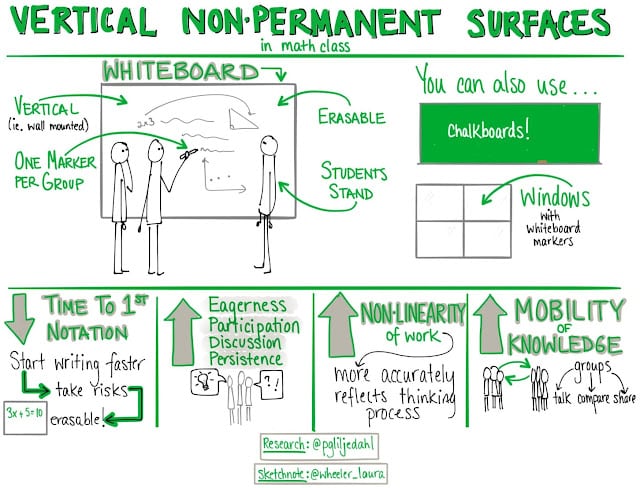
Our school ordered Wipebook Flipcharts for each classroom for this purpose.
How a 3-Act Task Works
3-Act Math Tasks are different from 3-part problems in that the task is based on three distinct “Acts” or sections as described by Kyle Pearce and Jon Orr:
- Act One: Spark Curiosity
- Act Two: Fuel Sense-Making
- Act Three: Ignite Deep Thinking
Before You Begin
One of the most important things the teacher must do before beginning a 3-Act Task is to anticipate student responses. If you want to be prepared to stretch your students’ thinking, you need to consider what they already know and all the different directions they may take their solutions.
Anticipate questions students will have, possible strategies they will use, and possible solutions you might see.
Act One
In Act One, I share a very short video or photograph with little additional information, and I ask my students to record what they NOTICE and what they WONDER. At this stage, I intentionally hold back information to increase my students’ curiosity about what is happening.
After sharing what students notice and wonder, I have them record the best math problem they can ask about the scenario they were given. I sometimes take one of my students’ questions as the focus for the task, but generally, I have my own math question already planned. The great thing about anticipating student responses is that I usually have a good idea of what they’ll come up with when I’m planning.
After sharing the question, I ask my students to make three predictions:
- One prediction that is much too low.
- One prediction that is much too high.
- One prediction that represents their best guess.
Act Two
During Act Two, the students dig deeper into the problem. I ask them to consider what questions they need answers to or what information they require before they can find a solution to my problem. At this point, I’ll share some “hints” or additional information to get them started. The students then work together on their non-permanent vertical surfaces to solve the problem and show their thinking.
As students work, the teacher’s role is to circulate between the groups, asking questions and noticing strategies. You need to decide which strategies you’ll present to the group in Act Three.
Act Three
Act Three is all about the teacher. At this point, I reveal the solution to the problem and explore the variety of student solutions in a “Teacher Talk” format. My students don’t explain their work to the group, I do the explaining for them. This is where I am doing my explicit teaching by:
- Sharing strategies I’ve noticed groups use.
- Explaining how some strategies are more efficient than others.
- Introducing the formulas or algorithms my students could have used.
- Demonstrating how the organization of the work is important for clear communication.
- Giving examples of how communication could be made clearer.
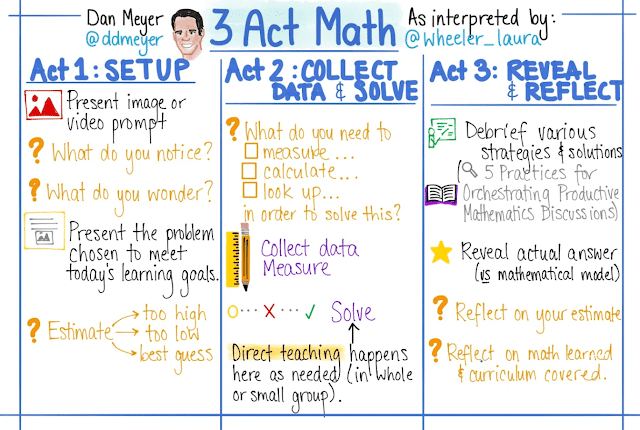
Planning The Tasks
Planning for 3-Act Math Tasks is the simplest job I have all week. There are SO many ready-to-go resources available online that it takes me next to no time at all to plan my lesson.
Check out all of the amazing resources available ready-to-go at these websites:
- https://gfletchy.com/3-act-lessons/
- https://tapintoteenminds.com/3act-math/
- https://whenmathhappens.com/3-act-math/
- http://robertkaplinsky.com/lessons/
- http://blog.mrmeyer.com/ (Click the Three-Act Math tab)
Check out the resource “5 Practices for Orchestrating Productive Mathematics Discussion” for more info on creating productive classroom discussions in math.
If math is of interest to you, you might also be interested in the ideas and resources I share in this blog post:
If you have enjoyed this post, please share it with friends and colleagues on Facebook or pin it on Pinterest:
